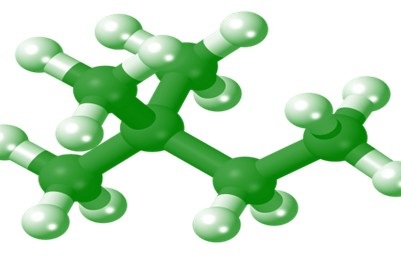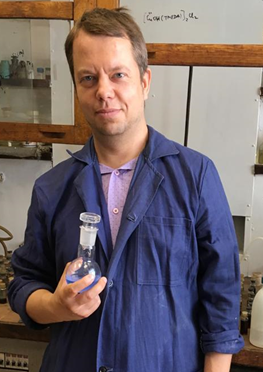New catalyst for oxidation and amidation
 One of the perspective areas of modern chemistry is the study of the possibility of the formation of complex molecular systems, including a set of metals within the same structure. An effective solution for obtaining such objects is the attraction of several types of ligands (the environment of metal atoms). For example, complex polymetallic complexes were obtained, where ligands coordinate metals by different centers (nitrogen / sulfur, phosphorus / nitrogen, etc.). This approach allows the formation of objects of different composition, structure, and, accordingly, properties.
One of the perspective areas of modern chemistry is the study of the possibility of the formation of complex molecular systems, including a set of metals within the same structure. An effective solution for obtaining such objects is the attraction of several types of ligands (the environment of metal atoms). For example, complex polymetallic complexes were obtained, where ligands coordinate metals by different centers (nitrogen / sulfur, phosphorus / nitrogen, etc.). This approach allows the formation of objects of different composition, structure, and, accordingly, properties.
Chemist RUDN together with Russian and French colleagues synthesized a new frame product based on copper and sodium atoms. The compound also contains two types of metal framing - “oxygen” (siloxane ligand) and “nitrogen” (bipyridine ligand). For the formation of the organosilicon ligand in solution, the simple organosilicon compound phenyltrimethoxysilane PhSi (OCH3) 3 is reacted with sodium hydroxide. Then copper dichloride was injected into this solution, and the second ligand, the organic compound bipyridine, containing two nitrogen atoms, easily forming complexes with metals. Selection of the ratios between the reactants, as well as the selection of the medium for the reaction / crystallization, made it possible to isolate the target compound. X-ray diffraction studies established a nontrivial molecular geometry of this product, a rare ratio of metals in the framework (five copper atoms, one sodium atom), as well as unusual intermolecular interactions of the frameworks located nearby in the crystal package.
 They are combined into the so-called supramolecular system due to the interaction of the aromatic rings of the nitrogen ligand. «We have received a fundamentally new type of frame metal complexes containing nitrogen and oxygen centers framed in copper and sodium ions. So the type of binding forms an unusual architecture, somewhat reminiscent of a bicycle helmet. According to our calculations, the hike we used — the “design” of metal complexes using different types of ligands — can be significantly developed and improved, and the previously inaccessible chemical objects are expected to be obtained. In addition, similar, mixed, framing of metal atoms can be a positive moment in catalysis, maintaining the activity of metal atoms», – says Alexey Bilyachenko, one of the authors of the study, Ph.D., an employee of RUDN. At the second stage of "Bicycle helmet" is effective in catalysis of the interaction of cyclohexane and nheptane with peroxides, which is promising for the production of reactive oxidation products. In the future, such derivatives are used to obtain a wide variety of materials, including polymers. Also high activity of “hello helmet” was shown in the reaction of interaction of benzyl alcohol with amines. The reaction is of great importance as a method for the formation of amides (important components of drugs). It was found that the activity of “helloscale” in catalysis is maintained even with an economical (0.4 mol% of copper) consumption of the catalyst.
They are combined into the so-called supramolecular system due to the interaction of the aromatic rings of the nitrogen ligand. «We have received a fundamentally new type of frame metal complexes containing nitrogen and oxygen centers framed in copper and sodium ions. So the type of binding forms an unusual architecture, somewhat reminiscent of a bicycle helmet. According to our calculations, the hike we used — the “design” of metal complexes using different types of ligands — can be significantly developed and improved, and the previously inaccessible chemical objects are expected to be obtained. In addition, similar, mixed, framing of metal atoms can be a positive moment in catalysis, maintaining the activity of metal atoms», – says Alexey Bilyachenko, one of the authors of the study, Ph.D., an employee of RUDN. At the second stage of "Bicycle helmet" is effective in catalysis of the interaction of cyclohexane and nheptane with peroxides, which is promising for the production of reactive oxidation products. In the future, such derivatives are used to obtain a wide variety of materials, including polymers. Also high activity of “hello helmet” was shown in the reaction of interaction of benzyl alcohol with amines. The reaction is of great importance as a method for the formation of amides (important components of drugs). It was found that the activity of “helloscale” in catalysis is maintained even with an economical (0.4 mol% of copper) consumption of the catalyst.
The global flow chemist ry market size was valued at USD 1.2 billion in 2018 and is estimated to expand of 10.0% by 2025
RUDN biochemists found out that apoptosis (programmed cell death) can be regulated using the EndoG enzyme. The discovery will lead to better understanding of cell and tissue protection mechanisms. The results of the study were published in the Biochimie journal.
RUDN mathematicians confirmed that the Earth has other satellites besides the Moon - cosmic dust clouds that are difficult to observe. A hypothesis about their existence had been developed 60 years ago, but first confirmations were obtained only last year. The calculations of RUDN mathematicians give a mathematical proof of the obtained data and will be used to plan space missions.
A team of agrochemists from Russia, Germany, and Chile confirmed the so-called ferrous wheel hypothesis - the turnover of iron in the soil that enriches it with organic nitrogen. The results of the study were published in the Geochimica at Cosmochimica Acta journal.
RUDN biochemists found out that apoptosis (programmed cell death) can be regulated using the EndoG enzyme. The discovery will lead to better understanding of cell and tissue protection mechanisms. The results of the study were published in the Biochimie journal.
RUDN mathematicians confirmed that the Earth has other satellites besides the Moon - cosmic dust clouds that are difficult to observe. A hypothesis about their existence had been developed 60 years ago, but first confirmations were obtained only last year. The calculations of RUDN mathematicians give a mathematical proof of the obtained data and will be used to plan space missions.
A team of agrochemists from Russia, Germany, and Chile confirmed the so-called ferrous wheel hypothesis - the turnover of iron in the soil that enriches it with organic nitrogen. The results of the study were published in the Geochimica at Cosmochimica Acta journal.